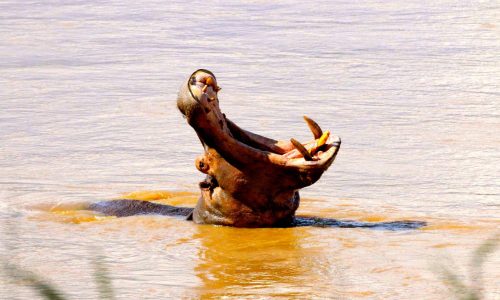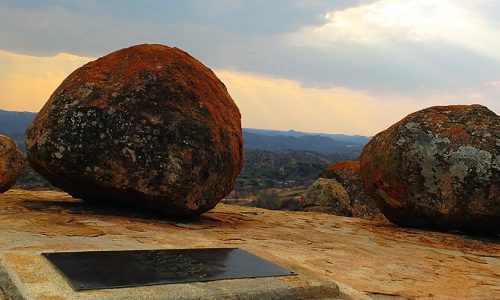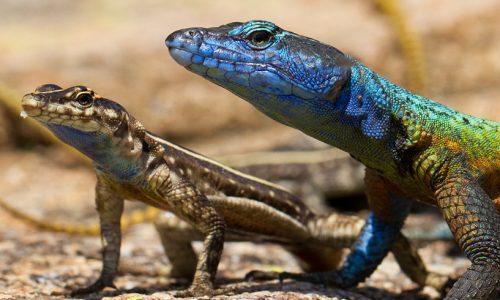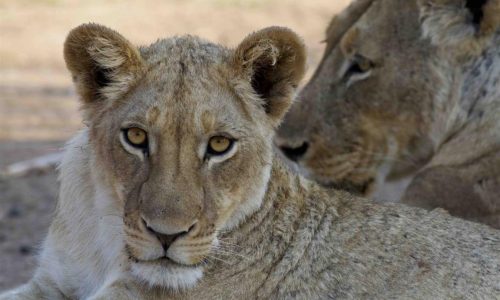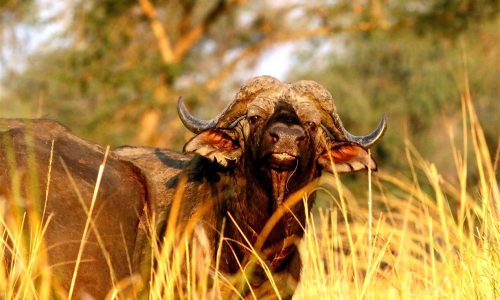Zimbabwe
Rivers teaming with Wildlife
Why visit Zimbabwe? Adventure lovers will definitely feel at home in Zimbabwe.
Experience an awe inspiring wildlife canoe safari, or a morning spent walking in Mana Pools, or simply just take a seat and enjoy the beauty that Zimbabwe has on offer.
The stunning area of Mana Pools, a UNESCO world heritage site, that attracts large animals in the dry season such as hippo, buffalo and elephants. Islands and sandbanks break through the river as the water recedes in the dry season.
Unlike the north, Matobo Hills in southern Zimbabwe is an area of large granite kopjes, hills formed over 2000 million years ago. When granite like boulders were forced to the surface then eroded over time. They are a popular attraction due to their interesting shape and local wildlife. Explorer Cecil Rhodes is also buried here in Matobo Hills.
Zimbabwe | When to Travel
Zimbabwe’s climate is influenced by the northern tropical weather of Central Africa and the more temperature climate of southern Africa. Its diverse habitat is seen in the country’s flora and fauna. The seasons are generally divided into two seasons – green and dry – though Zimbabwe does have a transition season in April & May.
Zimbabwe full of natural beauty and a popular destination to visit year round though, wildlife being more abundant in the drier season. The Zambezi floodplain in Mana Pools attracts large concentrations of buffalo, elephant, zebra, waterbuck, eland and kudu. Painted Wild Dog numbers have decreased in recent years and Wilderness working with Zim Parks have seen the Mpindo Pack from Hwange National Park rehabilitated into the area.
Green season sees the birth of antelope and zebra.
The transition season in the highveld and the southern areas of the country, see night time temperatures starting to fall. December to March the summer season is primarily when Zimbabwe receives most of its rainfall. The eastern highveld, due to its altitude will receive more than its western counterpart. In the north the rains bring a touch of green to wildlife areas such as Hwange National Park.
Region Focus
A natural wonder, Victoria Falls is the “Smoke that Thunders”. Magnificent scenery, and wildlife adventures on the mighty Zambezi river are up close and personal. The majestic waterfalls and spectacular wildlife viewing are just a few windows on Zimbabwe’s diversity. Whether it be a houseboat on Lake Kariba or a canoe safari down in the Zambezi Valley. There is certainly plenty of adventurous wildlife viewing to be done.
Mana Pools, located in the Zambezi Valley, has some of the country’s exceptional wildlife sightings. Large concentrations of buffalo and elephant are a major highlight along the rivers edge. Ana trees shed their protein rich pods which are vital for many species. Scenic views of the Great Rift Valley escarpment can be seen over the border in Zambia. Victoria Falls, locally known as Mosi-oa-Tunya, with vast amounts of spray seen kilometres away as water plummets into the gorge below. The falls border with both Zimbabwe and Zambia.
Elephants, baobabs and four pools – Mana Pools National Park.
In the northern part of Zimbabwe, from Victoria Falls to Lake Kariba flows the mighty Zambezi River. As the river reaches the floodplains of Mana Pools wildlife is abundant. sandy river banks, islands and steep escarpments make a magnificent backdrop. Mana Pools National Park, a UNESCO World Heritage site, located in the heart of the Zambezi Valley. Mana meaning “four” in Shona, and is named after the four main pools near the parks headquarters.
The summer rains bring a wide expanse of lakes and idyllic river scenery, its magnificent landscapes and extensive wildlife are a photographer’s paradise. The Zambezi floodplains are full of wildlife including buffalo, greater kudu, elephant, zebra, waterbuck and impala. Never too far out of sight and within earshot are grunting hippo, lion, leopard, painted wild dog and hyena.
Waterholes, a wildlife hide and herds of buffalo Hwange National Park.
Edging onto the border of Botswana, this corner wildlife pocket consist’s of Zimbabwe’s most fascinating parks. The Zambezi and Hwange national parks are diverse with their wildlife. But the stop over in stunning Victoria Falls along the way is one of the countries famous iconic features.
Situated on the edge of the eastern area of the Kalahari desert, Hwange National Park occupies over 14,000 square kilometres.
The largest national park in Zimbabwe and approximately one hour from Victoria Falls. Hwange is home to a large variety of wildlife, including 100 species of mammals, 400 species of birdlife, and the elephant population is one of the largest worldwide.
Hwange National Park isn’t only for elephant lovers, visitors will also see vast concentration’s of buffalo, eland, sable, lion, burchells zebra, rhino, bat-eared fox and giraffe. All of Zimbabwe’s protected animals are generally found in Hwange, and it is in this area where brown hyenas are able to roam freely in large numbers.
Enjoy a range of selected activities including day walks, night drives, or simply just relaxing in camp. Take in the surrounds of Hwange National Park, one of Zimbabwe’s most wild, unspoilt destinations.
Gonarezhou National Park bespoke wilderness and conservation.
The country’s second largest national park. The wilderness and biodiversity are exceptional with conservation at the forefront and partnership with Chilo Gorge. Definitely a must for any safari bucket list!
Your itinerary isn’t complete without a visit to the either of these parks above.
For more information on our Zimbabwean Safaris feel free to give us a call or alternatively pop us an email!
Select another destination below
Want to chat about your next African safari holiday?
Our trip planners are destination specialists and here to help you every step of the way.

